“A hundred years ago, the best Riesling wines commanded a higher price than the best Bordeaux,” said Mark Ancona, a partner in Norwalk’s Fountainhead Wines. “Riesling is the greatest grape!”
Twenty of us sat around two square tables at Fat Cat Pizza, each with four glasses of pale, fragrant Riesling – ready to taste. But before we got down to the wines, Mark and his partner Mike Pelletier took a few minutes to set the stage.
Riesling is an ancient grape, near the varietal roots of the grape family tree – ancestor to many other grape varieties. You can find the fruits of the world – berries, stone fruits, citrus and more – in its astonishing range of aromas and flavors. It can have some sweetness, but in the well-made wines, tart, citrusy acidity balances the sweetness in a refreshing embrace. Riesling can also be bone dry, complex, and long-lived. Either way, the wines are refreshing, delightful to sip, and great with food.
Riesling is grown in the cooler wine regions around the world. Germany, along the Rhine and Mosel rivers, is the best known source for fragrant, fruity, well-balanced wines. Alsace, on the border between France and Germany, is known for some of the priciest and most sought-after Rieslings – dry, complex, long-lived. Austria, Australia, Canada, and New Zealand are also known for Riesling. In the United States, Washington State and New York’s Finger Lakes region both have an excellent reputation.
Our first four wines included two from Germany, and one each from Canada and the Finger Lakes. The guys at Fountainhead (12 Knight St, Norwalk) visit wineries across Europe and do some direct importing. They’re particularly proud of their relationship with winemaker Heyl zu Herrnsheim and his Brudersberg Vineyard ($35), high up on a hill in the Rheinhessen village of Nierstein. Full-bodied yet delicate with notes of pear and flowers, the wine demonstrated why German Riesling is the gold standard. Heinz Eifel, Shine ($12) –
also from the Rheinhessen – was another classic fruit-driven wine at an everyday price.
Riesling also thrives in North America. Tawse Riesling Estate ($17) from Ontario seemed to be Mike’s preference with a less opulent Alsatian style and a juicy refreshing finish. New York’s Finger Lakes is the up and coming Riesling region these days. Ravines ($18) was very much in the German model, with tartly balanced lush fruit and modest sweetness.
After some famous Fat Cat pizzas (9 Wall St, Norwalk) – fried oyster (wow) and pesto-feta – the tasting moved to three more wines from Alsace and Austria. Alsace produces some of the great Rieslings in the world, but, frankly, they can be an acquired taste. Without the fruit-bowl aromas of German Riesling, they are completely dry, restrained, and asking for some bottle age. As Mike said, “Come back in fifteen years and these will be the best wines at the table.”
Schaetzel Riesling, Kaefferkopf Grand Cru ($36) had ripe dried fruit aroma and fresh juicy acidity – a delicious combination. The priciest wine of the evening, Schaetzel Riesling, Rangen Grand Cru ($70) was Mike’s wine to lay down – its charms being somewhat muted now, but blossoming over time. Rudi Pichler Riesling, Federspiel ($36) from Austria’s Wachau, was more in the German vein with round generous fruit and a refreshing tart finish.
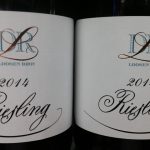 There are also gateway Rieslings – less complicated, modestly priced, widely distributed – ready to bring you into the fan club. Larger producers offer these good quality wines at reasonable prices. Try Dr. L ($11) from Germany’s Loosen Brothers for an easy-drinking wine or Essence ($11) from S.A. Prum, a great family name in the Mosel.
There are also gateway Rieslings – less complicated, modestly priced, widely distributed – ready to bring you into the fan club. Larger producers offer these good quality wines at reasonable prices. Try Dr. L ($11) from Germany’s Loosen Brothers for an easy-drinking wine or Essence ($11) from S.A. Prum, a great family name in the Mosel.
One of my favorites over the years is Eroica ($19), the flagship Riesling from Ch. Ste.  Michelle in Washington made in partnership with Dr. Loosen. Another good example is Mt. Beautiful ($28) from New Zealand with citrus and floral aromas paired with a bracing acidity.
Michelle in Washington made in partnership with Dr. Loosen. Another good example is Mt. Beautiful ($28) from New Zealand with citrus and floral aromas paired with a bracing acidity.
On our way up to the Hudson Valley last week we stopped at the Smokehouse of the Catskills (Smokehouseofthecatskills.com), just outside of Saugerties, NY for some weekend provisions. Smoked pork chops, garlicky kielbasa and bratwurst made in-house, and fresh sauerkraut were the makings for Choucroute, the traditional Alsatian slow-cooked family-style dish – a classic match with dry Riesling.
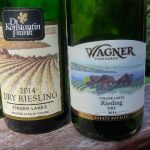 Wagner Dry Riesling ($15) and Konstantin Frank Dry Riesling ($17), both leading producers from the nearby Finger Lakes rounded out the menu. I was eager to see how the New York wines paired up with Marsha’s classic Choucroute. But here’s a culinary lesson for you: never put steaming sauerkraut, sausages, and chops onto a glass platter. On the way to the table, the platter shattered from the heat, sending our beautiful dinner crashing to the floor.
Wagner Dry Riesling ($15) and Konstantin Frank Dry Riesling ($17), both leading producers from the nearby Finger Lakes rounded out the menu. I was eager to see how the New York wines paired up with Marsha’s classic Choucroute. But here’s a culinary lesson for you: never put steaming sauerkraut, sausages, and chops onto a glass platter. On the way to the table, the platter shattered from the heat, sending our beautiful dinner crashing to the floor.
We’ll never know how the deliciously floral Frank Riesling and the more Alsatian style Wagner wines tasted with the Choucroute, but they were pretty good with an emergency order of pizza. The New York Rieslings really are world class.
You can find Riesling in many styles, from many places, at many price points. It is a great grape, but it’s also fun, refreshing, delicious and enjoyable with almost any menu. Give it a try! I’ll bet it becomes a house favorite.
You can reach Frank at notbreadalonefw@gmail.com
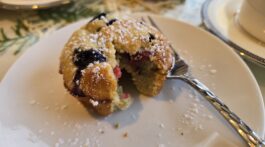







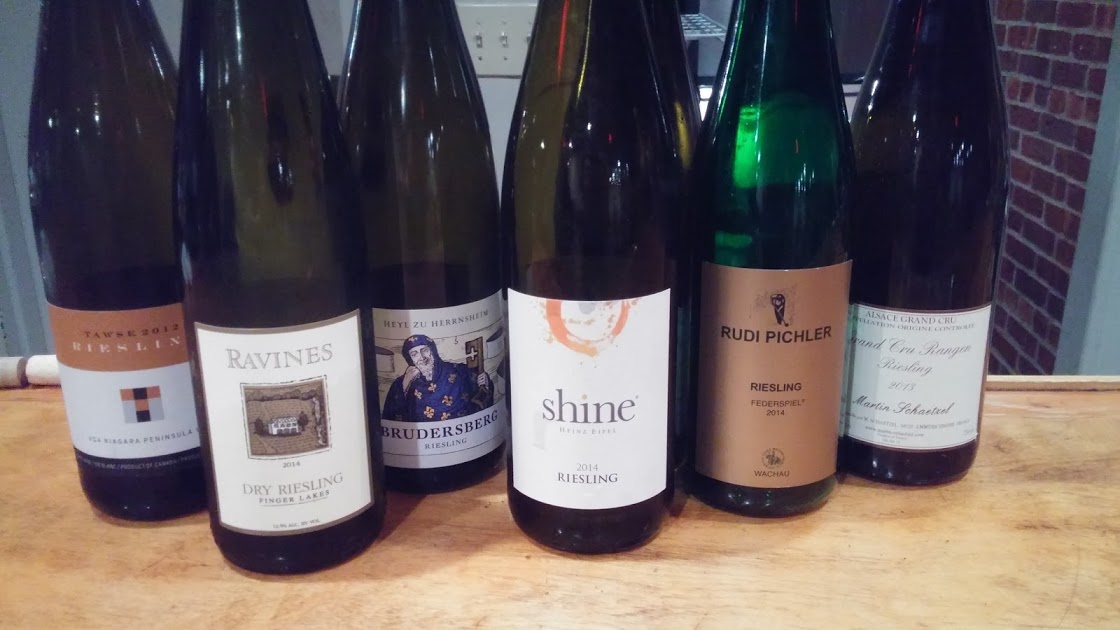
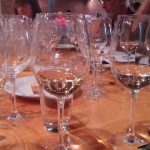

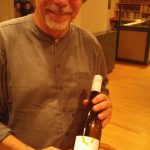
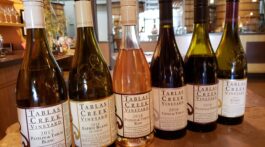
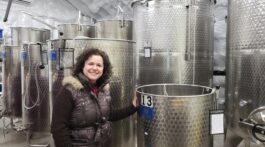

No Comment